#microtubule
Text
During cereal endosperm development, the triploid primary endosperm nucleus undergoes a series of mitotic divisions without cytokinesis, and the nuclei migrate to the periphery of the central cell, which also contains a large central vacuole (Figure 21.26, see parts A-D). As in the Arabidopsis coenocyte, each of nuclei is surrounded by radially arranged microtubules (see Figure 21.26E). Anticlinal walls form initially between adjacent nuclei, resulting in the tubelike alveolar cells, with the open end pointing toward the central vacuole (see Figure 21.26F). (...) The innermost layer of daughter cells remains alveolar in structure, and continues to divide periclinally until cellularization is complete (see Figure 21.26G and H). The most important source of starchy endosperm cells is the interior cells of the cell files that are present at the completion of endosperm cellularization (see Figure 21.26H).

"Plant Physiology and Development" int'l 6e - Taiz, L., Zeiger, E., Møller, I.M., Murphy, A.
#book quotes#plant physiology and development#nonfiction#textbook#triploid#endosperm#mitosis#cell division#cell differentiation#plant cells#cytokinesis#vacuole#arabidopsis#coenocyte#microtubule#anticlinal#alveoli#daughter cells
2 notes
·
View notes
Text
At the start of prophase, microtubules, polymerizing on the surface of the nuclear envelope, begin to gather at two foci on opposite sides of the nucleus, initiating spindle formation (see Figure 1.30).

"Plant Physiology and Development" int'l 6e - Taiz, L., Zeiger, E., Møller, I.M., Murphy, A.
#book quote#plant physiology and development#nonfiction#textbook#prophase#microtubule#polymerization#nuclear envelope#cell division#cell cycle#mitosis#cytokinesis#spindle formation
3 notes
·
View notes
Text
Curvy British Pakistani Babe Having Sex With BF Amateur Cam Hot
Massive Boobs MILF Lexi Gets Banged
My ex giving head
Lesbians fucking with big dildos in outdoor
Small boys gay sex with teens xxx Work can be rigid to get sometimes,
Busty gilf mouth spunked
Hot ass busty ebony fucks in kitchen
Male dwarf porn vids and show me african black gay ass movieture xxx
Big Ass Riding BBC
Small penis gay porn young first time This young stud was walking
#unfashion#driftwoods#unwatery#road-hoggish#nominalizing#phalangic#kinetographer#coincidental#harry#maharao#miskals#mythonomy#woad#sprinters#microtubule#nasobasilar#ginnery#disbench#chrominance#fifty-eight
0 notes
Text

Keeping Neurons Alive
Transcription factor RREB1 is essential for the survival of the brain's neurons and acts by regulating genes associated with the microtubule network of the neuron cytoskeleton
Read the published research article here
Images from work by Emily N. Griffin and colleagues
Howard Hughes Medical Institute, Department of Cellular and Molecular Medicine, Department of Neurobiology, University of California, San Diego, La Jolla, CA, USA
Image originally published with a Creative Commons Attribution 4.0 International (CC BY 4.0)
Published in Science Advances, January 2024
You can also follow BPoD on Instagram, Twitter and Facebook
#science#biomedicine#immunofluorescence#neuroscience#biology#cytoskeleton#neuron#microtubules#red trees
9 notes
·
View notes
Text
Death: The Quantum Transition
Death: The Quantum Transition
Introduction
Consciousness and Quantum States:
According to the Bhagavad Gita, a soul’s level of awareness at the time of death determines its path in the afterlife. This is consistent with the Orch-OR theory, which suggests that tubulins and other components of microtubules within neurons may play a crucial role in the formation of consciousness. It is speculated…

View On WordPress
#Advaita Vedanta#Afterlife#Consciousness#Orchestrated Objective Reduction (Orch-OR) Microtubules#Quantum Coherence Transition from Life to Death#Quantum Connection Cosmic Existence#Quantum State#Roser Penrose#Stuart Hameroff#Transcendental Meditation#Tubulins
3 notes
·
View notes
Text
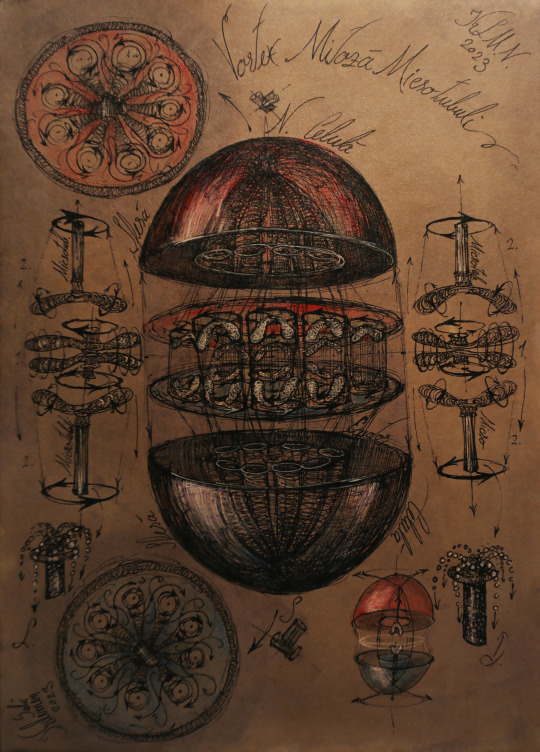

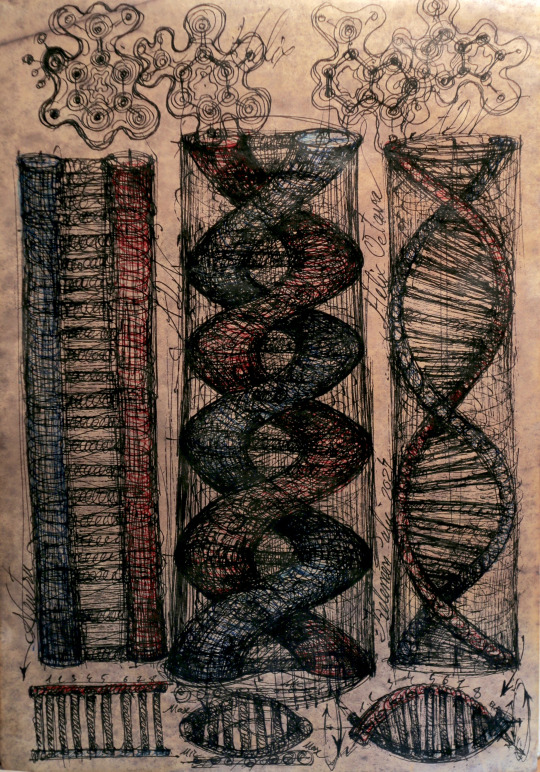
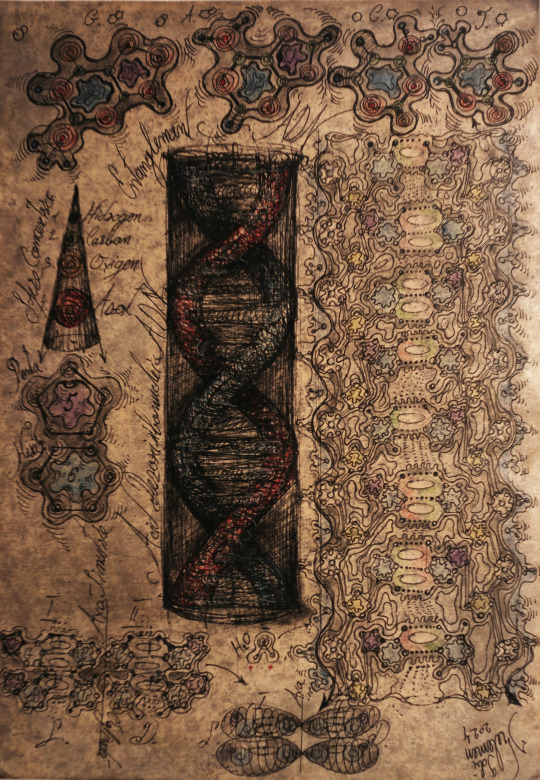
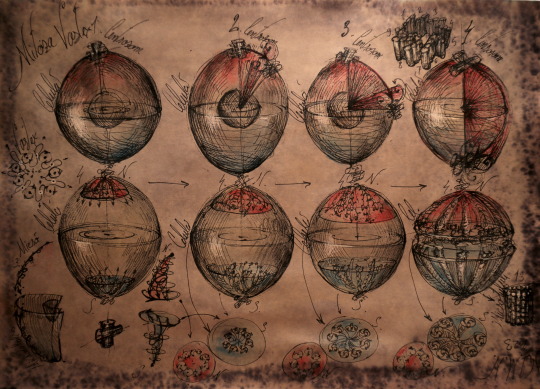
#Cell microtubules vortex#Mitosis Vortex microtubules#gabriel kelemen#dna#double helix#DNA entanglement standing waves
2 notes
·
View notes
Text
med school is so great. chemistry and certain biochem concepts never came easily to me and my lack of ease was always met with “well why are you going into medicine” and no actual help. now that we’re learning those concepts in med school, it finally makes fucking sense to me because they’re connected back to the human body and pathology and medicine instead of just being presented as nebulous, abstract concepts on a slide or page
#syd squeaks#something clicked today re: microtubules because it was related back to a disease and I was like oh shit!! im not stupid!!#I love the human body
2 notes
·
View notes
Text

2 notes
·
View notes
Text
The Brain: A Pressure Symphony of Classical and Quantum

Imagine the brain as a grand orchestra, with neurons acting as individual musicians. Quantum mechanics could be the hidden conductor, orchestrating the flow of information in a way that classical physics alone cannot explain. Just as a conductor can coax a powerful and moving performance from an orchestra, the brain, if it leverages quantum phenomena, could be capable of extraordinary feats of information processing and creativity. The more we understand the score – the laws of physics, both classical and quantum – the better equipped we are to appreciate the magnificent performance that is capable of the human brain.
Imagine the human brain not just as a complex network of neurons, but as a sophisticated quantum reservoir computer. This mind-bending hypothesis posits that the brain utilizes the bizarre laws of quantum mechanics to enhance its processing capabilities. While still theoretical, it opens doors to a universe of possibilities about how our brains might truly function.
Quantum Mechanics: The Maestro of the Dance:
Unlike the billiard-ball certainty of classical physics, quantum mechanics governs the microscopic world, introducing fascinating concepts like:
Superposition: A mind-boggling state where particles can exist in multiple states simultaneously, like a coin spinning on its edge, heads and tails at once, until a measurement forces it to choose.
Entanglement: Two particles become eerily linked, sharing a fate regardless of distance. Imagine flipping two coins, and no matter how far apart they are, they always land on the same side.
Plausible Mechanisms: Where Quantum and Classical Collide:
Could these phenomena play a role in the brain's remarkable abilities? Here are some possibilities grounded in current research:
Microtubules: Quantum Stagehands: Microtubules, tiny cellular structures, might be the key players. These hollow tubes could act as waveguides, channeling quantum information within the brain. Imagine them as microscopic fiber optic cables, but for the bizarre world of quantum phenomena.
Quantum-Assisted Signal Processing: Brain function relies on the rapid exchange of information between neurons. Quantum effects could potentially supercharge this communication, facilitating faster or more efficient signal transmission. Think of it as a quantum boost for our neural network, allowing information to flow with unprecedented speed and efficiency.
Stochastic Resonance: Embracing the Noise: Our brain might utilize a fascinating phenomenon called stochastic resonance. Imagine weak signals buried in noise. The brain could amplify these faint signals by incorporating quantum noise, enhancing its ability to make decisions in ambiguous situations.
Non-local Information Processing: Accordance (https://www.tumblr.com/ultrimio/748348095336677377/analyzing-the-intriguing-phenomenon-of?source=share) suggests that the receiver's action can influence the sender's message. Could the brain, through some unknown mechanism, utilize this principle for non-local information processing, potentially explaining phenomena like telepathy? This is highly speculative, but it highlights the need for further exploration beyond established physics.

The Brain as a Quantum Interferometer: Decoding the Universe's Symphony:
The brain's intricate structure might even act as a quantum interferometer. Just like a classical interferometer splits light waves to reveal hidden information, the brain could interact with external waves, potentially including:
Hypothetical Pressure Waves: These theorized waves could ripple through the fabric of the universe itself, carrying energy and information across vast distances. Imagine the brain acting as an antenna, picking up these subtle cosmic whispers and deciphering their secrets.
Info-Quanta: The Building Blocks of Reality?: Some physicists propose that these pressure waves are composed of fundamental units called info-quanta (similar to the luminiferous aether), the very building blocks of information itself. The brain, as a quantum interferometer, could interact with these info-quanta, potentially gaining a deeper understanding of the universe's underlying code.
Additional info on the luminiferous aether: The concept of luminiferous aether refers to a theoretical substance that was once believed to fill the universe and act as a medium for the propagation of light and other electromagnetic phenomena. Initially proposed in the 19th century, the luminiferous aether hypothesis faced significant challenges and was ultimately refuted by experiments like the Michelson-Morley experiment, leading to the development of modern physics theories like the special theory of relativity. Despite being debunked, recent research has reignited interest in the aether, with some suggesting that it could potentially unify physics by explaining phenomena like dark matter and dark energy.

Unexplored Innovations: A Glimpse into the Quantum Future:
The implications of these ideas are mind-blowing:
Enhanced Cognition: Imagine a future where the brain, leveraging quantum phenomena, possesses an unimaginable processing power, leading to breakthroughs in fields like artificial intelligence and problem-solving.
Quantum-Inspired Communication: Perhaps the brain can directly interact with these pressure waves, facilitating communication beyond the limitations of space and time. Imagine telepathy becoming a reality, not through magic, but through the power of quantum mechanics.
Quantum Healing: If the brain can manipulate quantum processes at a cellular level, it could potentially influence biological functions and even facilitate healing on a deeper level. Imagine a future where diseases are tackled by harnessing the power of the quantum brain.
Challenges and Considerations:
While these ideas are captivating, significant hurdles remain:
Limited Evidence: Currently, there's no definitive proof that quantum processes directly influence brain function. Further research is needed to validate these hypotheses.
Technical Hurdles: Measuring and manipulating quantum phenomena within a complex biological system like the brain presents immense challenges. Imagine trying to study the behavior of subatomic particles in a constantly firing neural network!
Alternative Explanations: Many aspects of brain function can be explained by classical physics. It's crucial to explore all avenues before definitively saying the quantum world plays a central role.
A Symphony Awaits:
The exploration of the brain as a quantum reservoir computer and potential interferometer pushes the boundaries of our understanding. While the concepts remain speculative, focusing on plausible mechanisms and fostering interdisciplinary collaboration between physicists, neuroscientists, and quantum biologists holds the key to unlocking the brain's true potential. The future of neuroscience might reveal a fascinating symphony where classical and quantum mechanics intertwine
#quantum reservoir computer#quantum interferometer#pressure waves (hypothetical)#info-quanta (hypothetical)#non-local fabric (hypothetical)#quantum coherence#stochastic resonance#microtubules
0 notes
Text
i love physiology sm,,,because now i know,,,theres THIS LITTLE GUY,,,, WALKING ON US!!! TRANSPORTING VESICLES!!!
ITS SO FUNNYYYY this one is specifically kinesin lemme dump abt this but like kinesin is moving directly on the cytoskeleton (cell's skeleton) on a filament called a microtubule (and the big thing is called a vesicle which carries cargo like proteins and other stuff) but omg i wanna hold it,,,funny little guy,,,
0 notes
Text
Low frequency of air conditioner is changed to high frequency, magnetic powder core ushers in demand
Low frequency of air conditioner is changed to high frequency, magnetic powder core ushers in demand
At the beginning of 2020, in addition to the medical market, production in many other industries was sluggish and demand was urgent. Especially in the home appliance industry, due to the objective reasons of the home economy, the demand for products such as traditional home appliances and small…

View On WordPress
#AI Magnets#ferrite permanent magnets#high-performance magnetic materials#Magnet Maker#magnet surface#Magnetic air conditioners#Magnetic Application#magnetic core#Magnetic Cores#magnetic field#magnetic fields#magnetic force#magnetic material#Magnetic Materials#magnetic microtubules#magnetic objects#magnetic powder cores#magnetic properties#magnetic treatment#Magnetotactic Bacteria#NdFeB Magnet#NdFeB permanent magnet#NdFeB Surface Treatment#Neodymium iron boron#Neodymium Magnet Applications#Permanent Magnet Materials#Permanent Magnets#Rare Earth Magnets#rare earth permanent magnet#Super Magnets
1 note
·
View note
Text
The process is initiated during the globular stage of embryogenesis, at which time the coenocyte is organized into evenly spaced nuclear cytoplasmic domains defined by radial systems of microtubules (Figure 21.25, see parts A and B). Mini-phragmoplasts (see Chapter 1) assemble at the boundaries of adjacent nuclear cytoplasmic domains and vesicle fusion at the division plane (see Figure 21.25C). (...) The last stage is the fusion of one side of the cell plate with the parental plasma membrane (see Figure 21.25D).

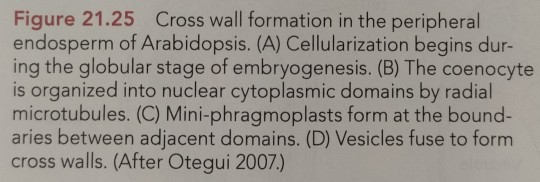
"Plant Physiology and Development" int'l 6e - Taiz, L., Zeiger, E., Møller, I.M., Murphy, A.
#book quotes#plant physiology and development#nonfiction#textbook#embryogenesis#cytoplasm#microtubule#phragmoplast#vesicles#plant cells#cell plate#plasma membrane
0 notes
Text
youtube
#what is the living being made up of?#discovery of cell?#what are living being made up of?#discovery of cell in english#cell discovery and theory#cell discover robert hooke#every day science#microtubules#digital microscope#cell number#introductory biology#when was cell discovered#how was cell discovered class 9#what are all living things made up of#what are the living organisms made up of#robert hooke#ananya mam biology#cell#cells#whatiscell#livingworld#fundamental#Youtube
1 note
·
View note
Text
The site at which the forming cell plate fuses with the parental plasma membrane is determined by the location of the preprophase band (which disappeared earlier) and specific microtubule-associated proteins (MAPs).
"Plant Physiology and Development" int'l 6e - Taiz, L., Zeiger, E., Møller, I.M., Murphy, A.
#book quote#plant physiology and development#nonfiction#textbook#cell plate#plant cell#cell division#cell cycle#plasma membrane#proteins#microtubules#preprophase
0 notes
Text

Stopping Swimming
A newly discovered genetic mutation in the CCDC146 gene affects microtubules [proteins that form a cell's inner structure] to cause sperm tail abnormality, a cause of male infertility
Read the published research article here
Image from work by Jana Muroňová and colleagues
Institute for Advanced Biosciences, (IAB), INSERM 1209, Institute for Advanced Biosciences, (IAB) CNRS UMR 5309, Institute for Advanced Biosciences, (IAB) Université Grenoble Alpes, France
Image originally published with a Creative Commons Attribution 4.0 International (CC BY 4.0)
Published in eLife, January 2024
You can also follow BPoD on Instagram, Twitter and Facebook
#science#biomedicine#immunofluorescence#biology#microtubules#cytoskeleton#male infertility#infertility
7 notes
·
View notes
Text
The Quantum Brain
THE QUANTUM BRAIN:
Exploring Consciousness Beyond Neural Boundaries:
Abstract:
Consciousness research has always been an enigmatic field that crosses over into other academic disciplines including philosophy, psychology, and neuroscience. Quantum Brain Science is a relatively new area that studies the complex relationship between quantum events and the human brain.
This article aims to…

View On WordPress
#Advaita Vedanta#Biophotons Quantum Processing#Brain as Quantum Antenna Quantum Interactions#Consciousness#David Bohm MRI Imaging#Global Mind#Karl Pribram Holographic Model#Microtubules#Noumenal and Phenomenal Worlds#Quantum Phenomena#Roger Penrose Orch OR Model#Stuart Hameroff#Subatomic Particles Quantum Mind#Tubulins
0 notes